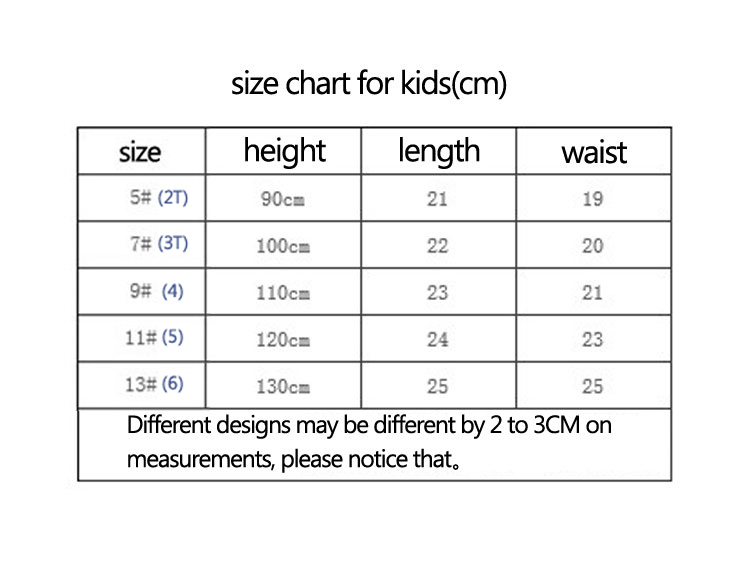This Guide is for you if: you’re buying a kids ATV helmet for the first time and you need to know everything about them before you buy, or you just need some pointers on when you need to replace youth ATV helmets and what to look out for.
I’ve spent hours researching everything online and through experience to put into one guide, covering youth ATV helmets on choosing the right fit, how they work, when to replace them and more.
Plus if you’re interested, I’ve hunted down the best kids ATV helmets on Amazon that have the best reviews, so you don’t have to waste time searching yourself.
Jump to my Recommended, Best & Safest Kids ATV helmets now!
So why do kids need a helmet when riding an ATV?
To protect your child from getting injured or killed.
Whilst ATV’s are fun, they’re still a vehicle. Whether a kids is riding them slowly or at high speed, accidents happen. If the ATV rolls over and lands on your child’s head – a helmet is going to protect them – a baseball cap isn’t.
Most accidents with kids ATVs are due to the rider not wearing a helmet. Don’t add your kid to this statistic.
Wherever you buy an ATV from, they will usually sell it with a helmet or ask you straight away if you have one already. The dealer isn’t just trying to upsell another product to you – listen to them and get their advice, or follow ours in this guide.
Also many people may think riding an ATV in your backyard or on private property doesn’t require a helmet as they are not on the road. Wrong.
Children under the age of 18 are required by law in all US states to wear a helmet when operating an ATV on private land. If not, you can be fined up to $1000 in some areas.
DOT means Department Of Transportation for those of you unfamiliar with the acronym.
Basically, always buy a helmet which has been DOT approved, as it goes through rigorous safety tests to comply with the requirements. The helmets we recommend at the bottom of our guide are all DOT approved or exceed the criteria.
If you want to find out how much testing is involved, you can go here to the Snell foundation, which is a non-for profit organization that has it’s own safety standards too.
You may have seen different helmets being worn by people riding ATVs – some are just a chin strap and open faced, others are full masked with chin guard, which are worn by dirtbike riders and motorcross.
Always go for a full faced helmet, no matter what. It offers better protection than the former, which is what you want for your child.
You will see some recommendations for helmets below that may say for dirtbikes – don’t worry, these are perfectly fine for ATV riding.
It’s extremely important to size correctly when buying youth ATV helmets. You need a helmet which is the right fit for comfort and safety. Choose a helmet that is way too big, then your child’s head will rattle around in it. Choose one too small, then – well it won’t fit. Or it will be painful to get the kids ATV helmet off if you’ve squeezed it on!
Fortunately, measuring for a kids ATV helmet is easy – you want to use tape measure and wrap it around the child’s head one inch above the eyebrows, giving you the circumference of the widest part of the head.
Once you have this info, then use a size chart to pick the right size helmet.
Size charts can vary slightly depending on manufacturer, so that is why it’s important to measure the size of the childs head for the ATV helmet.
If find that the measurement is between two sizes, my advice would be to purchase the larger one for comfort, but also because your child is likely to grow some more.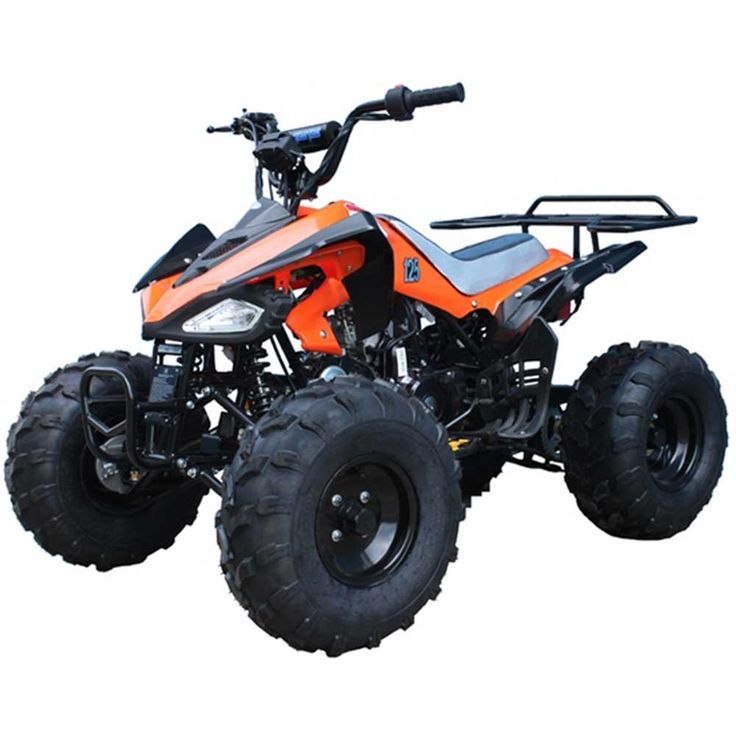 Just to put you at ease, the larger helmet won’t wobble about – the lining in the helmet can be adjusted as can the strap.
Just to put you at ease, the larger helmet won’t wobble about – the lining in the helmet can be adjusted as can the strap.
It’s helpful to know how youth ATV helmets work, especially if you think that it’s damaged and may need replacing. I break down each part of kids ATV helmets so you become familiar with the terminology.
This is the shiny exterior of the helmet and is the first line of defence for your child’s head – essentially it is designed to spread and absorb an impact.
Expanded polystyrene or EPS is the stuff that will make the difference between safety and injury (or worse). EPS is designed to deform and absorb impact.
However, this will only work once.
EPS is compacted into several different densities – however once it is compressed it will not revert back to it’s original position and therefore will not protect as well as before.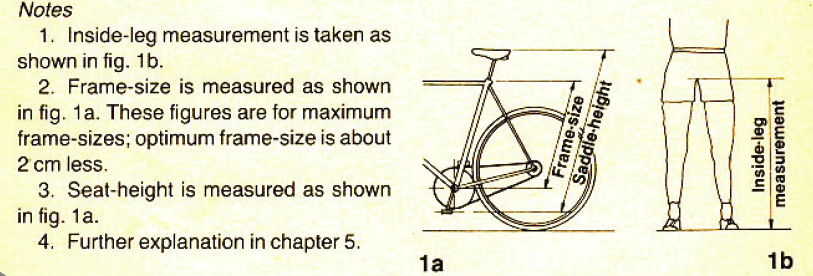 This means if you’re kids has had an accident and the helmet took a heavy impact hard enough to deform the EPS liner, get a new one.
This means if you’re kids has had an accident and the helmet took a heavy impact hard enough to deform the EPS liner, get a new one.
The padding inside the helmet isn’t just there to make the kids ATV helmet comfy – it’s designed purposely to keep the helmet from moving around in a crash and grip the head.
Some Kids ATV helmets come with a face shield (or visor). Pretty obvious what this does – it stops stuff from flying in your face and hitting the eyes. Goggles obviously work to this effect.
This is the fancy name for a chin strap – these are bolted to the helmet and all straps like the rest of the helmet are safety approved. Its job is to keep the helmet on the riders head.
Why You Should Always Buy New Kids ATV Helmets And Never Used OnesSo why you should always buy new youth ATV helmets instead of old or pre-used ones?
It’s probably damaged or worn out – either through previous crashes, bumps or degradation over time.
Even if you can’t see any damage to the shell, you have no clear idea about the state of the EPS liner.
If the previous owner had not been in a serious crash, the helmet could have been dropped, thrown or used for other fun and games whereby it has been rendered useless (you know how kids can be!). This means the EPS liner has absorbed impact and is now inert.
Or if the helmet is old, the EPS could have dried out and is now brittle, rendering the helmet useless.
My advice is always buy a new kids ATV helmet – when it comes to your kids life, you want them to be safe – it’s your responsibility – so don’t be cheap.
The 5 Best & Highly Recommended ATV Helmets For Kids & YouthsNow that you know everything about kids and youth ATV helmets, I’ve picked out the best online for kids and youths (teenagers – they vary in all sizes, some may need the ‘small’ adult sized helmets).
Choosing your child an ATV helmet that they will wear is important. There are some awesome options below – it may be worth having your young rider with you when looking for their helmet. They are all certified DOT and are very safe.
There are some awesome options below – it may be worth having your young rider with you when looking for their helmet. They are all certified DOT and are very safe.
You can spend $200 on a kids ATV helmet, but honestly, you really don’t need to. Price & safety are not directly related, so a $50-100 helmet is absolutely fine. However, the V1 and Vega below have extra safety certifications closer to $100, so they are safer.
Fox Racing V1 Kids Helmet - BEST OVERALLFirst up on the list and my personal favourite is the Fox Racing V1 Youth helmet.
This the best looking, well ventilated, safe, feature rich helmet whilst being AFFORDABLE on this list by far (apart from the V2 & V3, which are a it more pricey!). You can check the pricing here on Amazon.
The design is one of the coolest around, with a great aesthetic look with great lines and sleek design. It also comes in dozens of colors and graphics, so there is Fox V1 for everyone. The visor attachment completes this look an integrates really well. Kids will love wearing this as it is a step apart from the others in this list.
The visor attachment completes this look an integrates really well. Kids will love wearing this as it is a step apart from the others in this list.
Ventilation wise there are 9 intake and 4 exhaust vents for optimum airflow, meaning that on a hot day of riding, your child won’t get as sweaty compared to the others. The Fox helmets are easily the most well ventilated entry level helmets and are comparable to the high end adult options.
The V1 offers MVRS – Magnetic Visor Release System – which releases in the event of a crash. Fox created this originally in their flagship V3, an incorporated it into their entry level V1. The reason it releases is to not put any rotational force on the users head in the event of a crash.
Inside the helmet you have a removable comfort liner and cheek pads, with a two stage EPS liner and a polycarbonate shell for maximum protection. This helmet exceeds the DOT regulations and is one of the safest helmets made for kids. Also it only weighs 2 pounds so it’s one of the lightest helmets out there.
This comes in three shell sizes (S,M & L), which means you have 3 different EPS liners and 3 different visor sizes, which means that they are easy to replace.
 05
05 ATVs For Kids Rating
5/5
Fox Kids Sizing Chart:
Note: Fox Helmets are slightly different sizes than the one below, so you may find bigger kids will need the Adult XS, S or M, which you can find here on Amazon.
Check Out The Fox Racing V1 Pricing on Amazon
Vega Mighty X2 Helmet for ATVs - BEST VALUEWhilst the Fox V1 Helmet is the best of the bunch, the Vega Mighty X2 is the best value by far.
It comes in at $30 less than the V1, but has all of the same features except the V1 has 2 extra exhaust ports for ventilation.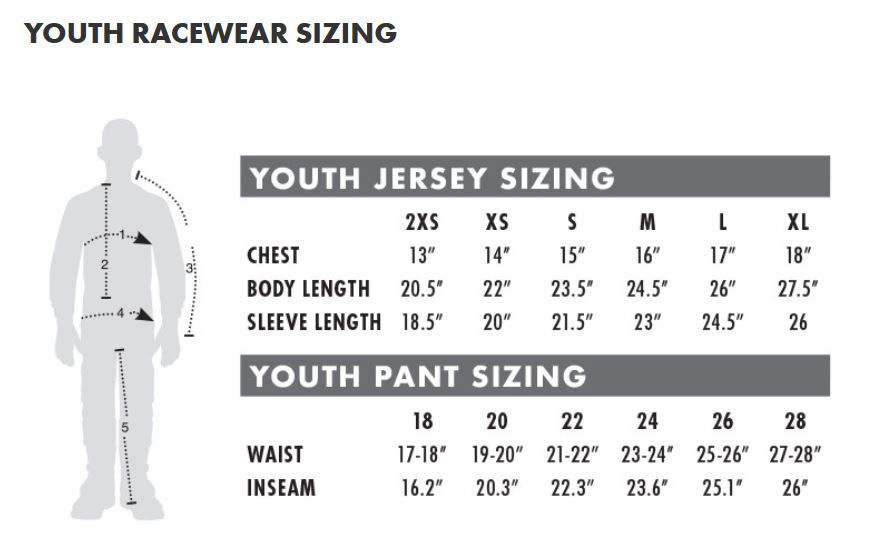 If you’re not wanting to spend over $100 on a kids helmet, then this one is perfect.
If you’re not wanting to spend over $100 on a kids helmet, then this one is perfect.
Also this has sizes going up to XL, meaning it can fit shorter teens. Plus this is my favourite Matte Black helmet for young riders – very Batman looking!
It has an Adjustable multipoint visor, a removable liner and is very lightweight, with a polycarbonate ABS shell including a multi channeled high density EPS liner that provides maximum airflow.
Also for those of you in snowy areas, you can purchase a snow deflector as an attachment that fits inside the helmet which goes up to the eyes.
The only small downside is that it can weigh up to 3.5lbs, so heavier than the V1
For the price, this is the best value helmet on the market, perhaps only coming in a close second to the Fox V1 – but you’re talking slightly less ventilation and saving 30 bucks.
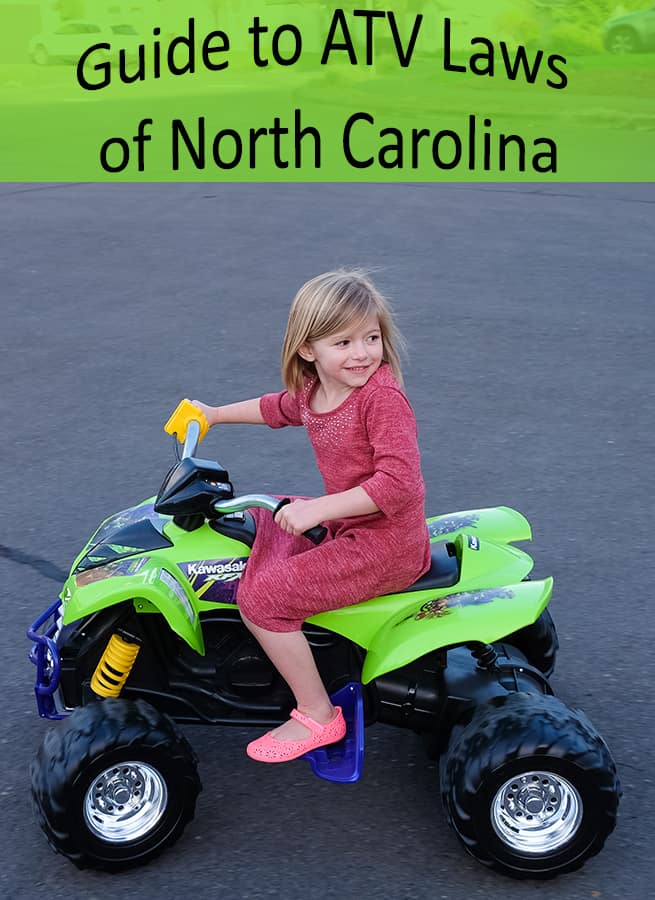 05
05 ATVs For Kids Rating
4.7/5
Vega Kids Sizing Chart:
For larger head sizes, you’ll need to go for an adult sized Vega. Check them out here on Amazon.
Check Out Vega Helmet Pricing on Amazon
WOW Youth ATV HelmetFor those of you who are on a bit of a budget, then the WOW helmet is half the price of the Fox V1 and will still keep your child safe. It comes in a variety of colors with two design types.
The one thing I noticed is that this felt a bit ‘plasticy’ compared to the V1 and Vega which is probably due to the material the shell is made from – thermoplastic alloy.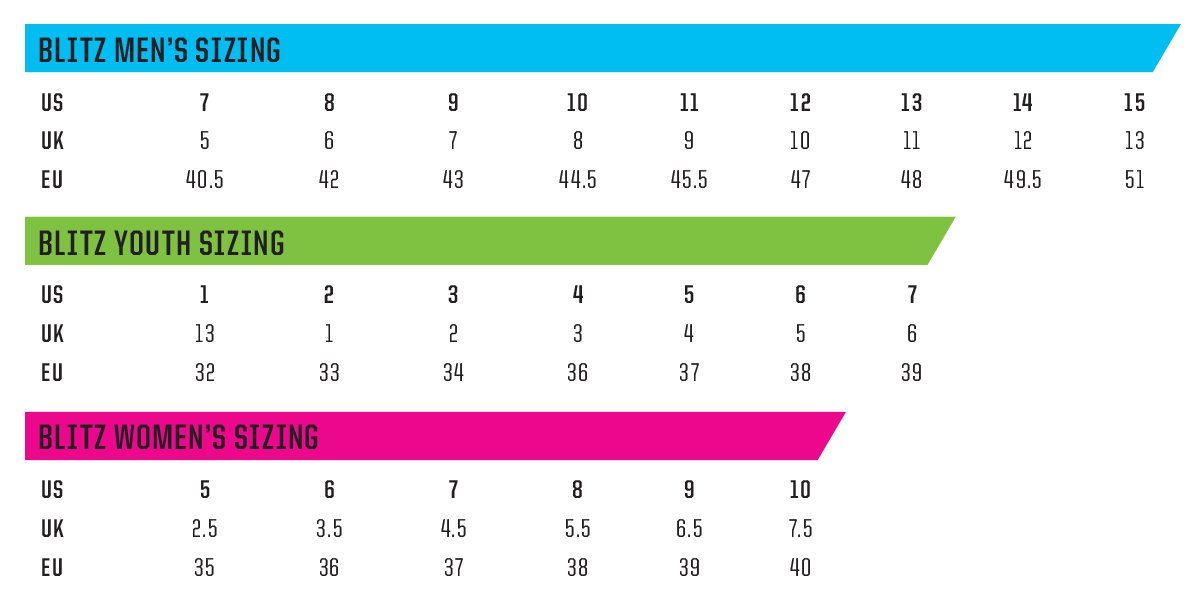 It’s not as tough as the polycarbonate, though it still does the job and is DOT certified.
It’s not as tough as the polycarbonate, though it still does the job and is DOT certified.
It has the removable and washable padding as standard and comfortable interior and is pretty lightweight at 2.9lbs.
Overall if you’re looking for a budget range, this is great.
ATVs For Kids Rating
4/5
WOW Kids Sizing Chart:
 3-19.7″ or 49-50 CM
3-19.7″ or 49-50 CMCheck Out The WOW Helmet Pricing on Amazon
One thing that is noticeable about Hard Head Helmets, they look very flashy!
Some of the variants come with a visor (which looks very cool – similar to the character out of the Halo videogames!), which removes the whole need for goggles. It’s also a great choice if your child wears glasses, as they can keep them on. Only thing I would say about visors like this is they can get foggy, and the ventilation is fairly standard for this price of a helmet, so be mindful of that.
Other than that minor gripe, the helmet meets the DOT certification, has the standard removable liners for washing and comes in at a very lightweight 2lbs, which is great for little ones as it isn’t heavy at all.
It also comes with a free helmet bag which is pretty cool.
ATVs For Kids Rating
4/5
Hard Head Helmets Kids Sizing Chart:
 3-19.7″ or 49-50 CM
3-19.7″ or 49-50 CMCheck Out Hard Head Helmets Pricing on Amazon
Is your kid a fan of Spider-Man? Then this is for them!
A great budget range option, not only does this helmet look great for superheroes, it comes with free goggles and gloves too, though you may find that the gloves don’t fit because hand sizes can vary in children. The goggles are pretty basic (great for a starter set) though you’re going to want to get some better ones.
This is one of the most popular choices for entry level kids helmets on Amazon – it has around 500 positive reviews at the time of writing. I think this is because of the all in one gear and it is cheap, but I wanted to state that this helmet is the most basic compared to the rest.
It is DOT certified, however the ventilation is limited. Don’t get me wrong, it’s a great looking helmet and is great as a starter when the young riders are not going to quick, however I would go for the Vega for 30 bucks more for peace of mind.
ATVs For Kids Rating
3.7/5
TCMT Kids Sizing Chart:
 3-19.7″ or 49-50 CM
3-19.7″ or 49-50 CMCheck Out TCMT Helmets Pricing on Amazon
When Should You Replace Kids ATV Helmets?Lifespans. We get 80 Years, the mayfly gets a day and jellyfish can live forever.
Kids ATV Helmets have them too.
So when do you replace youth ATV helmets? Is this just commercialist nonsense? What is the real safety advice?
If you want the quick answer – I advise to replace a Kids ATV helmet every 3 years. Here’s why:
Most helmets have a born on date. Check online, because different manufacturers use different coding systems.
Every major authority on ATV helmets recommend that 3-5 years is the “lifespan” of a helmet. This is a bit of a mixture of guesswork and corporate greed, as there has never been an official study on helmets as there are so many factors.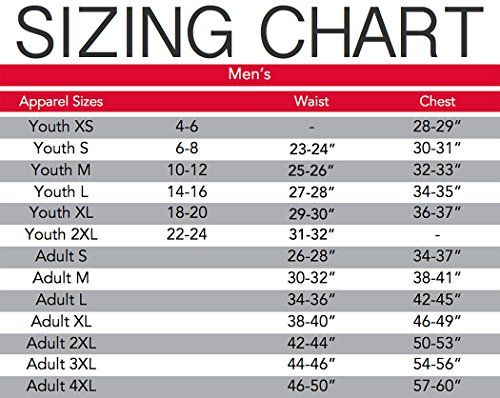
This is mainly because the “used” variable depends on how much the rider is literally using it through wear and tear, and because helmet companies want you to keep buying them!
So let’s take age with a grain of salt – by looking at some important factors, we can make a good safety call using some simple tests.
Here is a myth – every nick and scratch from every accidental drop constitutes as a ‘fatal’ blow.
This is nonsense.
Minor surface marks have no appreciable effect on the shell’s ability to stop a puncture of disperse an impact.
It’s only significant chips and cracks revealing the under layers of the shell that you should be concerned about. I’ve broken a lot of ATV helmets and the thing that always impresses me is how resilient they are. Dropping one on a hard surface doesn’t really do anything to the integrity of the helmet at all.
The main concern is when the helmet gets impacted from weight inside it. This can cause the EPS foam to compress, which is a one-time safety function and that would render the helmet spent.
This can cause the EPS foam to compress, which is a one-time safety function and that would render the helmet spent.
So for those kids who like to run into things whilst wearing a helmet and head butting people or other stuff – walls or whatever – this will cause damage within the helmet, rendering it defective. ATV helmets are not toys, they are designed to stop your kid from getting badly hurt or worse. So explain to them why this isn’t a good idea.
Also avoid storing heavy objects in kids ATV helmets over time or repetitively resting it on the handlebars of the ATV. This can cause similar compression in the EPS liner.
It goes without saying that you should check inside of the helmet shell for imperfections by removing the comfort liner. If you look after it, you will be fine. If there is some warping, major dents or cracks – then it is time to replace your Kids ATV helmet.
This is an important factor when testing the padding and lining in youth ATV helmets, making sure it is still a good fit.
Get your child to wear the helmet as normal and then ask them to shake their head in short, fast movements. This will reveal the quality of the comfort lining.
If the helmet moves with the child’s head, then all good. However if you notice when they are shaking their head and the helmet is wobbling and sliding around, this indicates that the liner is compressed to the point of improper fit – so it’s time to get a new kids ATV helmet.
Another reason for this compression and liner murder is due to makeup and hair products. The chemicals in these products transfer and get absorbed by the helmet. Also kids who get sweaty easily will affect the liner due to moisture.
To tackle these particular issues of chemical and sweat residue, you can wear a beanie underneath the helmet.
You can also just change the interior padding when it wears out, rather than buying a whole new helmet.
So as long as your kid hasn’t damaged the shell or EPS and I keep replacing the interior liner – they can use their ATV helmet forever?
Nope. Because of Exposure!
Because of Exposure!
New helmets are filled with resins and oils and that makes them spongey. But these thing evaporate over time, leaving your kids ATV helmets a brittle shell of their formers selves.
So even if the helmet passes the shell and EPS test, it will eventually crumble into retirement. It happens very slowly in a box, but when using it outdoors, you have it battling the elements such as the wind, the rain, the heat, dirt snow etc.
So here’s an approximation that I go by to know when the lifespan of kids ATV helmets.
Which brings us on to another question regarding costs:
Is it better to buy a $200 kids ATV helmet (so basically an expensive one) and replace it every 5-6 years, or to buy a $50-$100 helmet and replace it every 3?
Trick question – price and safety are not directly related. So you’re better off with that newer, good value helmet than an expensive older one in the long run. However, with kids they grow quickly, so it’s likely you’ll be replacing their helmet every couple of years anyway.
So you’re better off with that newer, good value helmet than an expensive older one in the long run. However, with kids they grow quickly, so it’s likely you’ll be replacing their helmet every couple of years anyway.
All youth ATV helmets have to meet approved safety standards, otherwise they couldn’t be sold. Also materials and safety standards improve over time, so the cheaper one you buy three years from now will be safer than the more expensive one you have for longer.
Overall, I recommend you replace your kids helmet every 3 years providing they haven’t damaged it in some way as mentioned above.
As kids grow, they’ll need a new helmet anyway to fit properly, so 3 years is a good lifespan for safety. Plus they make great gifts!
How To Clean Kids ATV HelmetsKeeping your gear clean is advisable so you can make sure you can see if the helmet is damaged. Also they can begin to smell, which is never pleasant.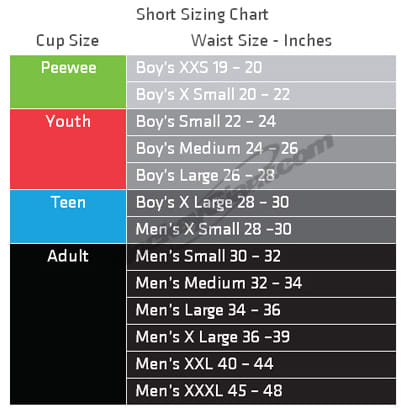
You’ll want to take apart the comfort liner from inside the helmet and wash it separately, either by hand or machine wash it. Throwing it in a washer should be fine so long as you don’t put it on a high temperature wash. Hand washing it with soap or shampoo is also good and then leaving it to dry.
For the helmet itself, a sponge and hot soapy water is fine, with perhaps a cloth and toothbrush to get the mud and dirt out of the fiddly areas.
A clean smelling helmet is nice to put on rather than a sweaty one, plus kids should keep care of their stuff – especially if they want to look good riding!
Where To Store A Kids ATV Helmet
Storing your Kids ATV helmet is important. If you don’t look after it, it can become defective.
The EPS within the helmet is built to take one crash – if this form gets deformed, damaged or dries out – it is useless and you will need to buy another one (I cover when to replace your kids helmet below).
Leave it lying around on the floor, it can get scratched, split and broken.
Leave it resting somewhere to take a long fall, it could impact the EPS (unlikely, though it depends on the surface/height/helmet age).
Have it hanging on your handle bars will over time deform the EPS over time. Also using it to store things in like keys, tools whatever can do the same.
Storing it outside for days when it is hot will gradually evaporate the oils within the EPS, making it brittle.
So where do you store your Kids ATV helmet? Inside, in a cool place if possible, where it won’t fall and has nothing inside it.
You can go one step further and purchase a helmet bag for it if you want, giving it that extra bit of protection, but it isn’t necessary (though keeps it clean and dust free).
How To Get Kids To Wear Their ATV Helmet
Many people think riding ATVs without a helmet is fine. It’s not.
This isn’t smart and I don’t ever recommend this. No matter how long you’ve been riding an ATV, you never know when something may happen causing a crash. It ain’t worth the risk.
No matter how long you’ve been riding an ATV, you never know when something may happen causing a crash. It ain’t worth the risk.
Right from the start, a kid needs to know whenever they get on an ATV, the rider should already be wearing their helmet. Explain the dangers, but also compliment how cool they look. Helmets are cool anyway, so it shouldn’t be too difficult!
This also is a factor when choosing a helmet – make sure the child likes it. There are many colors, styles and designs available. I go through some below – have a look.
They will be more likely to want to wear something that looks awesome and fashionable.
My personal advice – a helmet is the most important piece of safety gear above all else. Don’t cheap out and get a used one, this is your child’s safety and life we are talking about. Get a new one which is at least DOT approved.
The helmets I’ve recommended above are the best online. Personally, I would always go for a Fox Racing V1 or a Vega Mighty. These are not only DOT approved, but ECER approved also.
Personally, I would always go for a Fox Racing V1 or a Vega Mighty. These are not only DOT approved, but ECER approved also.
Yes you’re looking at $100 for a V1, but the Vega is only $70 and is just as good, though only marginally less ventilated.
The others are DOT approved and are good, budget ranged youth ATV helmets too and will work fine, but at the end of the day, how much do you value your child’s well-being? For me personally, the peace of mind the V1 and the Vega bring with their extra safety ratings, features and functionality are totally worth it in the long run.
Jump to my Recommended, Best & Safest Kids ATV helmets now!
Hopefully that’s helped you out with information for a youth ATV Helmet and which ones are the best.
I’ve written some great other guides on finding the right gear for young riders, such as goggles, gloves, armor and more.
I also have an ATV Buying guide on everything you need to know about ATVs for kids and what to look out for.
And if you’re feeling high-tech, we have some awesome ideas on the best helmet cameras available online.
As you're shopping for a new ATV helmet, how do you know which size you actually need? After all, helmets aren't a one-size-fits-all thing, so how is this sizing determined? To have the safest riding experience possible, a well-fitting ATV helmet is essential. If you were to be involved in a crash, your helmet is the only thing in between your head and the road. By taking the proper measurements of your head, you can ensure you choose the right size helmet that fits snug, but not too loose or tight. We'll help you get the right measurements to determine the best ATV helmet for you.
Did you know that your head shape plays a major role in helmet size? Manufacturers take head shapes into consideration when designing their helmets, so they can assist everyone. There are three shapes that accommodate the majority.
The most common shape is intermediate oval, where front-to-back measurements are longer than side-to-side. This is measured form the forehead to the largest area at the back of the skull.
This head shape is longer front-to-back than side-to-side. This shape is about ½" or more longer than intermediate oval.
The front-to-back measurements of round oval head shapes are very proportionate to the side-to-side measurements.
Use a tailor's tape measure to determine the measurements of your head. For the most accurate numbers, have your spouse or friend help you do this. Wrap the measuring tape around the head above the ears and a half inch above the eyebrows. This is the fullest part of the head. Take the measurement on the forehead. Use this head circumference measurement to purchase a helmet. You can find sizing charts online for most ATV helmets. Don't assume your size for one brand is the same for another. This is also true for different styles of helmets, as a full-face style will have a different fit than a modular. Always double check to ensure you're purchasing the right size.
This is also true for different styles of helmets, as a full-face style will have a different fit than a modular. Always double check to ensure you're purchasing the right size.
Are your kids ATV riders? It's important to take new measurements for their helmets every year as they grow. That helmet from a year ago may already be too small! Keep them comfortable and secure by checking their helmets before the riding seasons begins.
Got your new ATV helmet? Great! Let's check to make sure it's right. After placing it on your head, how does it feel? Too tight? It should feel a bit tight, but not painful. There should be no "hot spots," which are areas that put pressure on points of the skull or face. Over time, the helmet will loosen a very small degree as it molds to your head. Is it too loose? If you can stick a finger in-between your head and the helmet interior, it's not tight enough. You should have good peripheral vision without the helmet creating blind spots.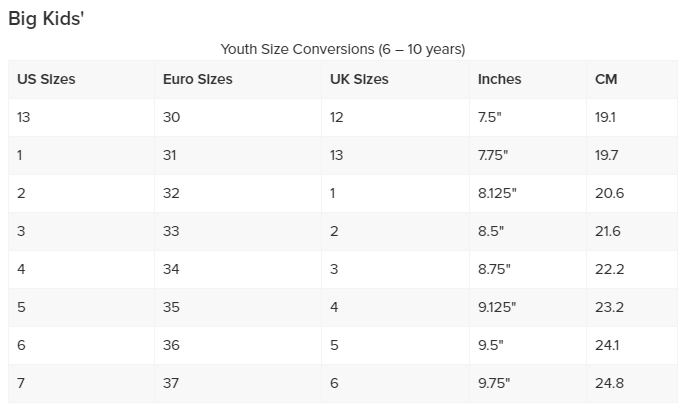 If the helmet interferes with your vision in any way, the sizing may be off. Many retailers offer free exchanges if you find that the helmet you ordered is not 100% right.
If the helmet interferes with your vision in any way, the sizing may be off. Many retailers offer free exchanges if you find that the helmet you ordered is not 100% right.
Finding the right size ATV helmet is easy! Taking the measurements of the head takes just seconds and can be used alongside helmet size charts on any manufacturer or retailer's site. At Polaris Parts Nation, we offer dozens of officially licensed Polaris helmets for adult and youth riders. You can find great deals on the styles you love in the right size you need for yourself or another rider in the family. A well-fitted helmet ensures both safety and comfort while riding ATVs and will last for several years before another needs to be purchased.
Finding the size of the helmet is very easy, just follow the instructions from the FlipUp motorcycle clothing store.
First, you need to measure the circumference of your head in centimeters, as shown in the figure below.
The measurement result is a number from 52 cm to 66 cm. For children's helmets, this is a size from 48 to 54. Then you need to determine the letter encoding that matches your size according to the table. For example, your head circumference is 55.5 cm, so you have a helmet size S.
If you get a borderline size, for example, 58.5 cm, then we recommend choosing the smaller helmet size in the table, in this case M.
Next, you need to choose the helmet you like the right size and go to the catalog of motorcycle helmets.
Determining the size of motorcycle jeans, motorcycle pants
You will need to take measurements with a tape measure. In the dimensional grid, motorcycle jeans do not differ much from urban jeans.
To determine the size, you need to know the waist circumference and the length of the inseam from the groin to the ankle
Waist circumference is measured strictly horizontally along the narrowest part of the body, passing through the most protruding point of the abdomen. The length of the trouser leg corresponds to the distance along the inside of the leg from the groin to the floor.
The length of the trouser leg corresponds to the distance along the inside of the leg from the groin to the floor.
You can choose jeans in the Motojeans section
For girls, measurements are carried out according to the same principle, only we check with another table. You can choose women's pants here
Determining the size of the jacket, turtles
You will need to take measurements with a tape measure. To determine the appropriate size, it is necessary to correlate the measurements obtained with the sizes in the table.
The main parameter for determining the size of the jacket, turtle - bust and waist. When measuring chest girth, the tape should fit snugly to the body, pass through the most protruding points in front, through the armpits from the side, and wrap around the shoulder blades from behind.
It is easier to choose the size of a turtle, because. they are adjustable with Velcro and buckles
Waist circumference is measured strictly horizontally along the narrowest part of the body, passing through the most protruding point of the abdomen.
When measuring the circumference of the hips, the tape should be horizontal, passing in the middle of the thigh and behind the most protruding points of the buttocks.
After determining the size, you can choose the jacket you like in the Motorcycle Jackets section
Shoe sizing
Correct measurement of the size of the foot is the key to choosing the right shoe size.
Measurements are best taken at the end of the day, when the size of the foot increases due to the rush of blood
Outline your foot with a pencil (as in the figure). When measuring, the pencil should be held strictly vertically, while making sure that it is in constant contact with the foot. Next, measure the distance from the heel to the big toe with a centimeter tape and compare the data obtained with the table to determine the size
After determining the size, you can choose the boots you like in the section Motor boots
Glove sizing
To determine the size of gloves, you need an ordinary centimeter tape, wrap it around the widest part of the palm without a thumb, check the result with the table.
After determining the size, you can choose the gloves you like in the Gloves section
Articles
30 Apr
Even if you are a beginner, or just always ride carefully - a helmet should be on your head when you are driving an ATV. And because traffic rules require it, and because even at low speed, a fall without protection can result in injury. Add branches here that you can cling to in the forest.
Since there are dozens of helmets in any store now, it can be difficult to choose.
All models are divided into 4 types according to their design: open, modular, integral and cross.
Open helmets protect only the head, plus may have glass. They don't protect their faces. These are suitable for leisurely walks at low speed.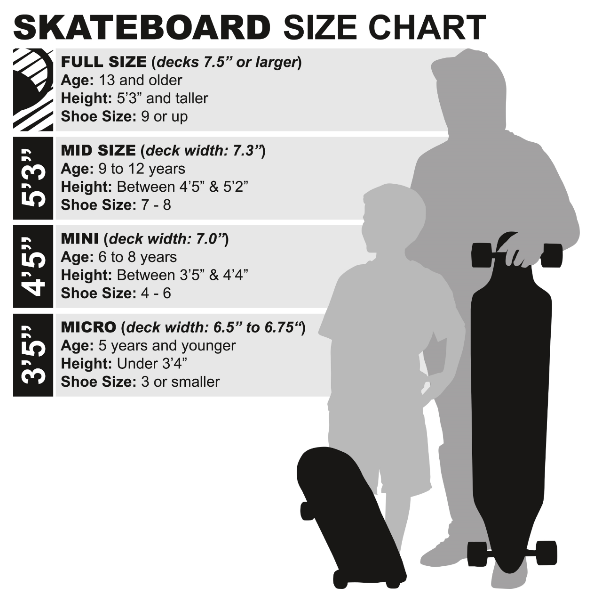
Modulars are good in that the lower (chin) part and the visor move up. Initially, this was invented for smokers - so that at bus stops you do not have to remove your helmet for a smoke break. But as it turned out, it is also convenient for others: to drink water, explore the surroundings, and have a bite to eat. This helmet is ideal for a relaxed ride.
integrals are the most secure. Structurally, it is a closed round helmet (sometimes with a small visor) with a chin bar that does not move up. The visor, depending on the model, may or may not rise. The main disadvantage: to chat, look around or drink water at the bus stop, the helmet will have to be removed.
Cross-country helmets are considered sport helmets. They weigh less, have a more aggressive design: a far protruding visor, the chin bar does not rise, and also protrudes forward. There is usually no visor: instead, goggles must be worn to the helmet (but there are also models with glass). According to many riders, it is easier to breathe in such helmets than in integrals, since there is more room for exhalation.
According to many riders, it is easier to breathe in such helmets than in integrals, since there is more room for exhalation.
The choice between a cross-country helmet or a full face helmet depends on the rider's preference. If you prefer to have more mobility, and ride actively and quickly, take cross-country. If you want to be as protected as possible, take the integral. And even better - try on both this and this option, and choose according to your feelings.

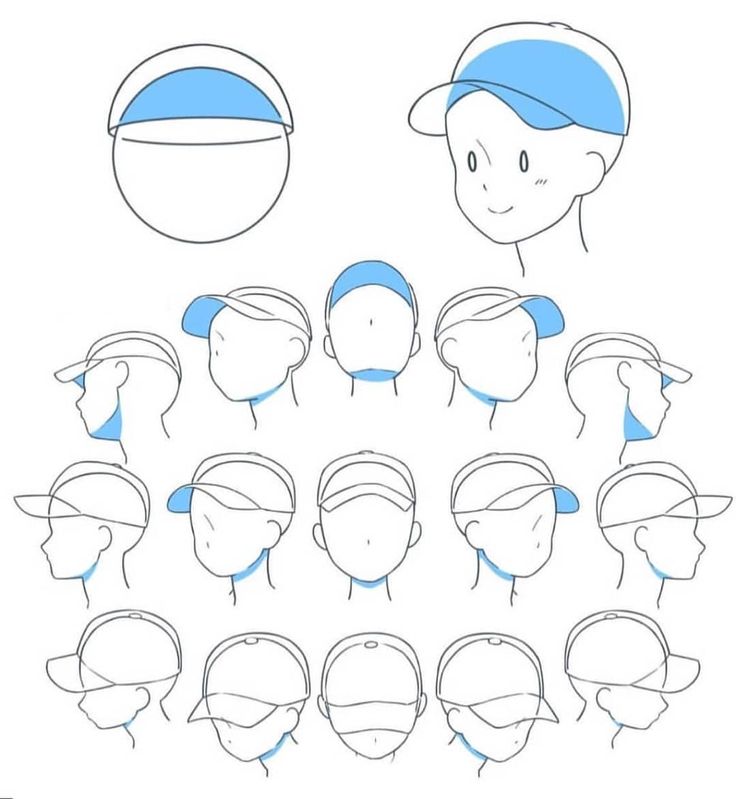 22-2001 certificate, but in practice it is needed only if you are stopped by a traffic police inspector.
22-2001 certificate, but in practice it is needed only if you are stopped by a traffic police inspector. CFMOTO V520 open face helmet Budget lightweight option with a visor and wide and high glass. Suitable for beginners and for tourists who will not push the gas to full, and will not climb into an impenetrable thicket (since there is no protection for the neck and chin - branches can scratch them).
FXR Clutch Cross Helmet. Highly ventilated, lightweight polymer helmet with removable anti-bacterial lining, rear diffuser (to protect your neck) and extended rubber insert (to protect against frost and snow if you plan to ride in winter).
509 Tactical cross helmet. With a durable polycarbonate shell, two layers of EPS of different densities and thoughtful ventilation.
ProBiker Riding Tribe Integral A simple budget helmet with a removable hypoallergenic lining, vents on different sides, quick release and safety.